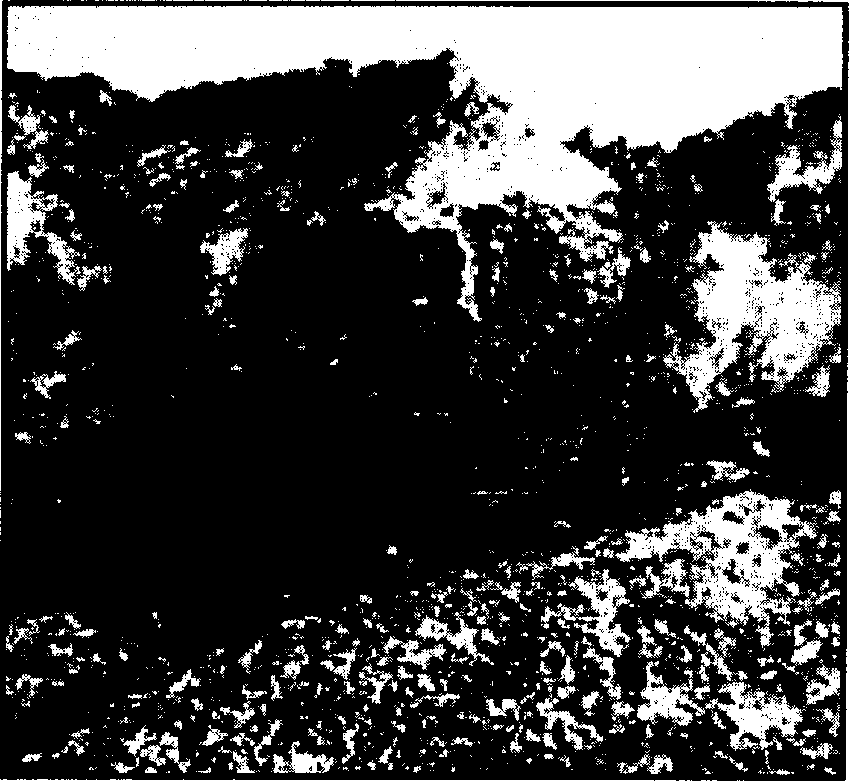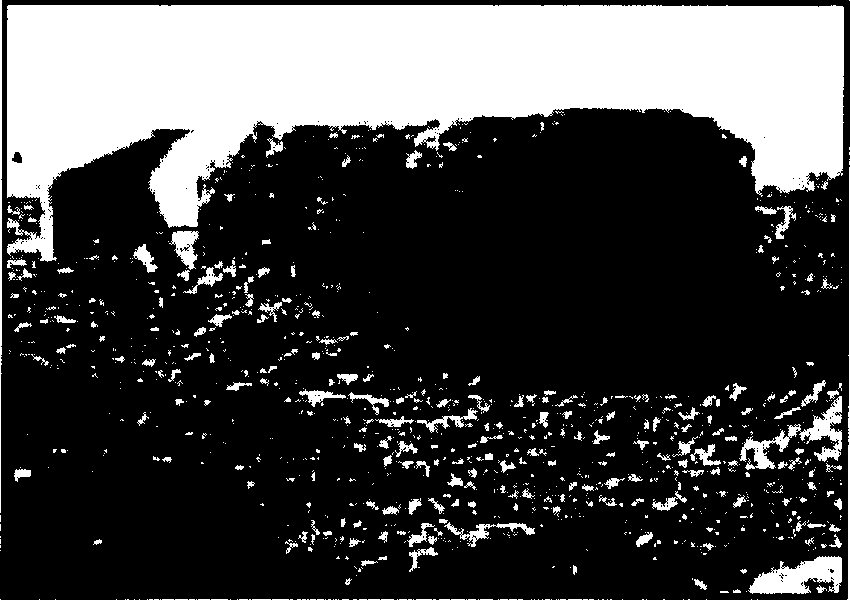The task of neutralizing the guns, and of cutting the road running behind the Pointe from Saint-Pierre-du-Mont to Grandcamp, fell to the 2nd and 5th Ranger Battalions, commanded by Lieutenant Colonel James Rudder. The scheme was to land Companies D, E, and F of the 2nd Battalion in a cliff-scaling attack on the Pointe while Company C landed to the east to destroy gun positions on the western end of Omaha Beach. While these assaults were taking place, Companies A and B, along with all of the 5th Battalion, were to mark time off the beach and wait for a signal that the cliff scaling had succeeded. If the signal came, they were to follow in and also scale the heights. If the signal did not come, they were to land at Omaha Beach and attack the Pointe from the rear.
The fierce bombardment leading up to the assault brought a mass of clay and rock down to the base of the cliff, allowing the rangers to scramble halfway up before they had to scale the shear heights. This photograph was taken on D plus I (June 7, 1944).
Companies D, E, and F landed at the Pointe at 0710 hours, 40 minutes later than their planned landing time. They were the victims of heavy seas and winds, one of their landing craft having sunk on the way in. Once landed, however, the rangers engaged the Germans on top of the cliffs in a heavy firefight, and within minutes the first man was up. In small groups the rangers fought their way to the casemates, only to find them empty of the big guns.
The Germans had removed their big guns from the concrete They moved forward and cut the road
casemates to escape destruction by bombardment—as is shown in
this photograph, taken after D-Day behind the Pointe, and then a two-man
patrol went down a narrow road leading south and discovered the guns some 550 yards (500 metres) from the casements. The guns were zeroed in on Utah Beach, and a German force, totalling some 100 men, was assembled a short distance away. Using thermite grenades, the two rangers melted and destroyed the guns' elevating and traversing mechanisms, rendering the pieces immovable. They then returned to their positions.

